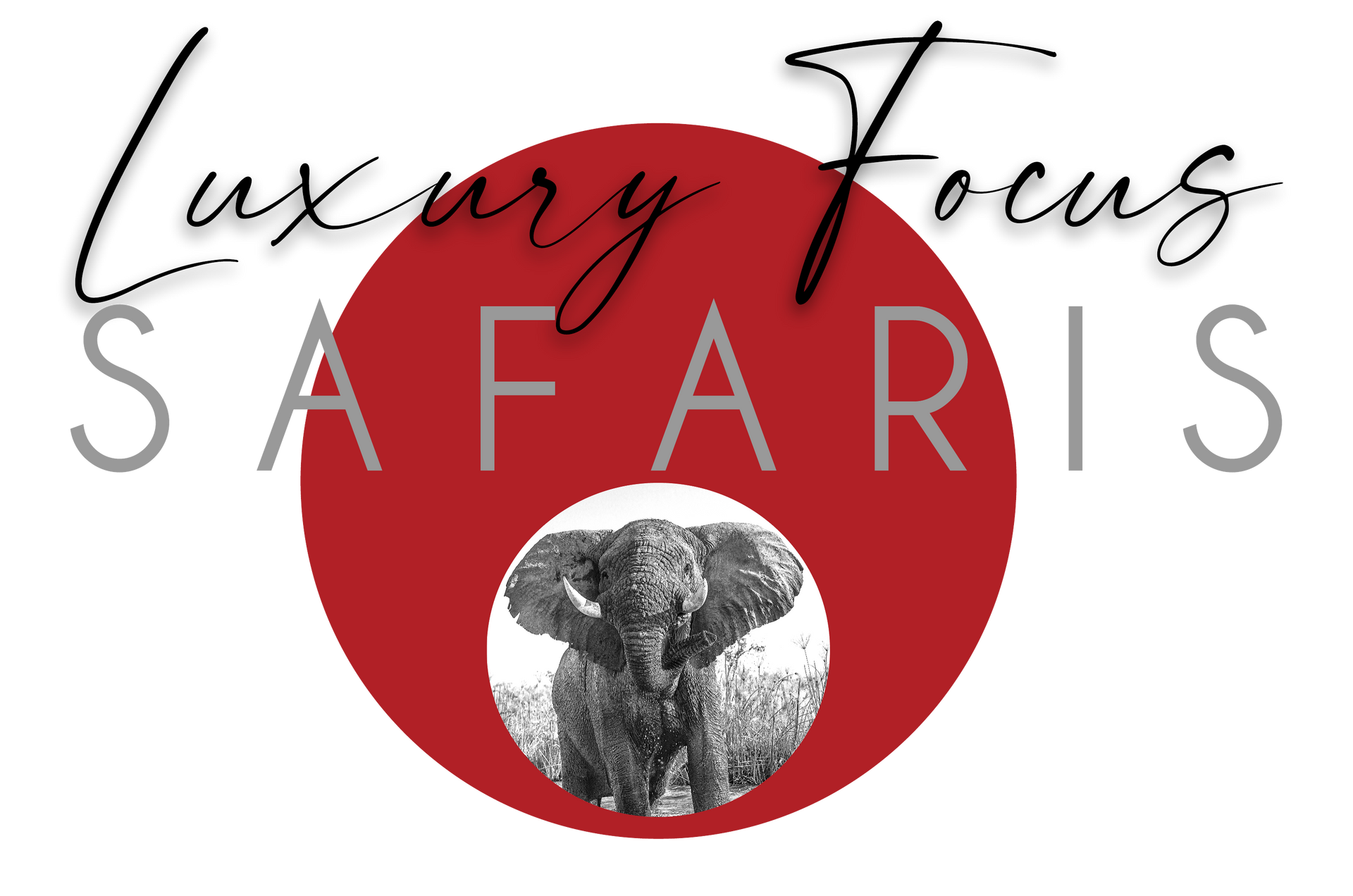Kenya
Kenya
Kenya
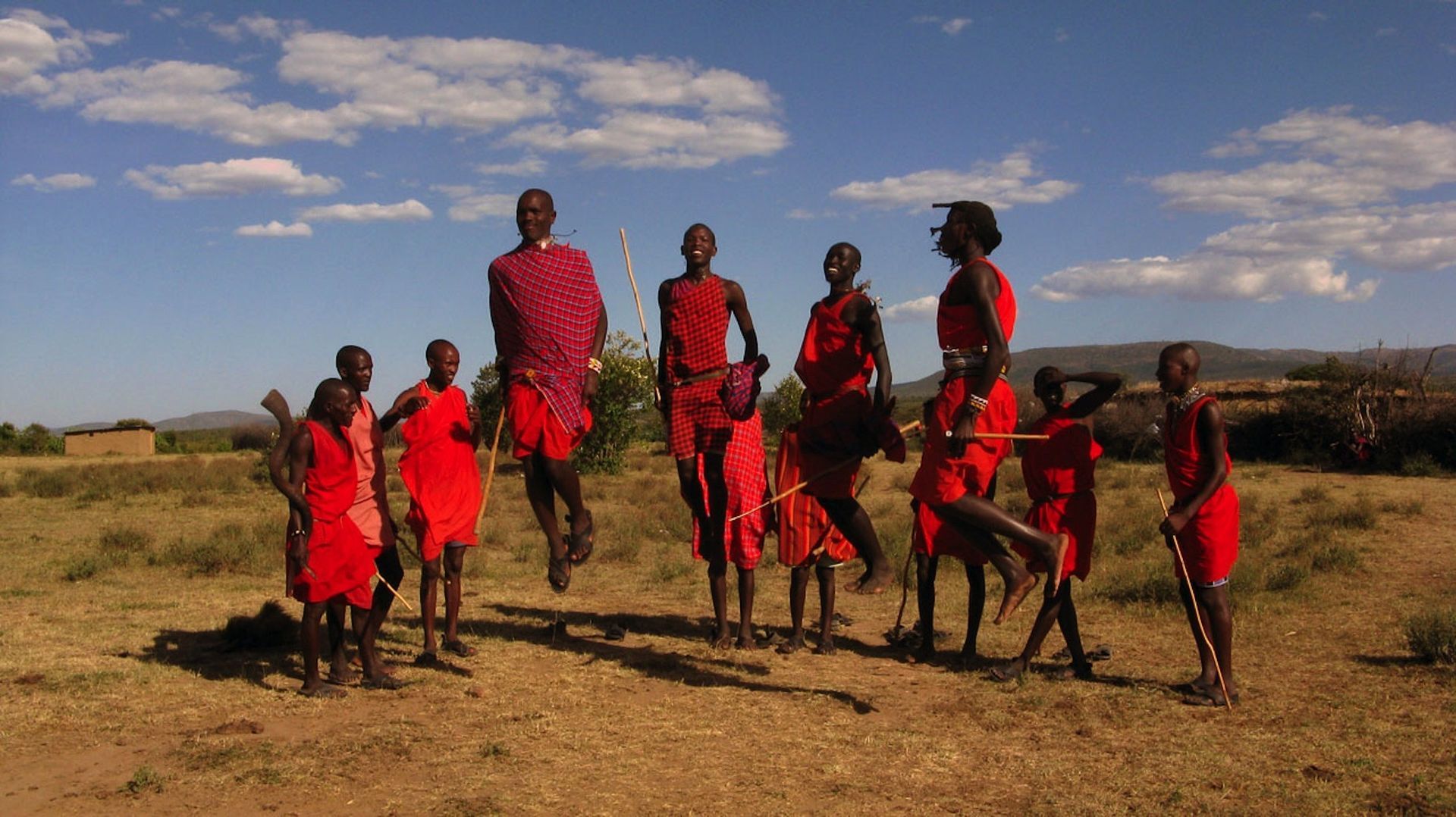
Slide title
Write your caption hereButton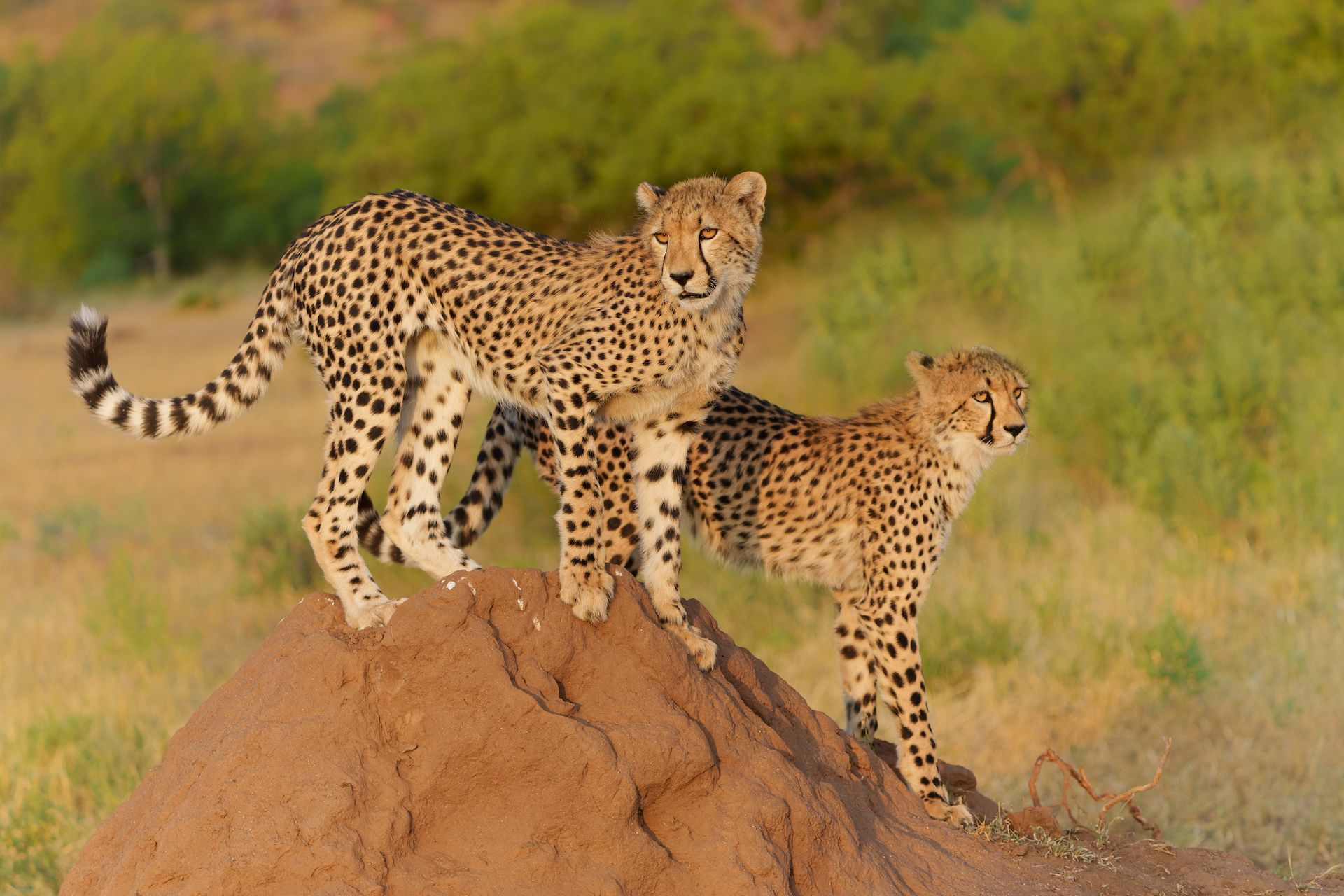
Slide title
Write your caption hereButton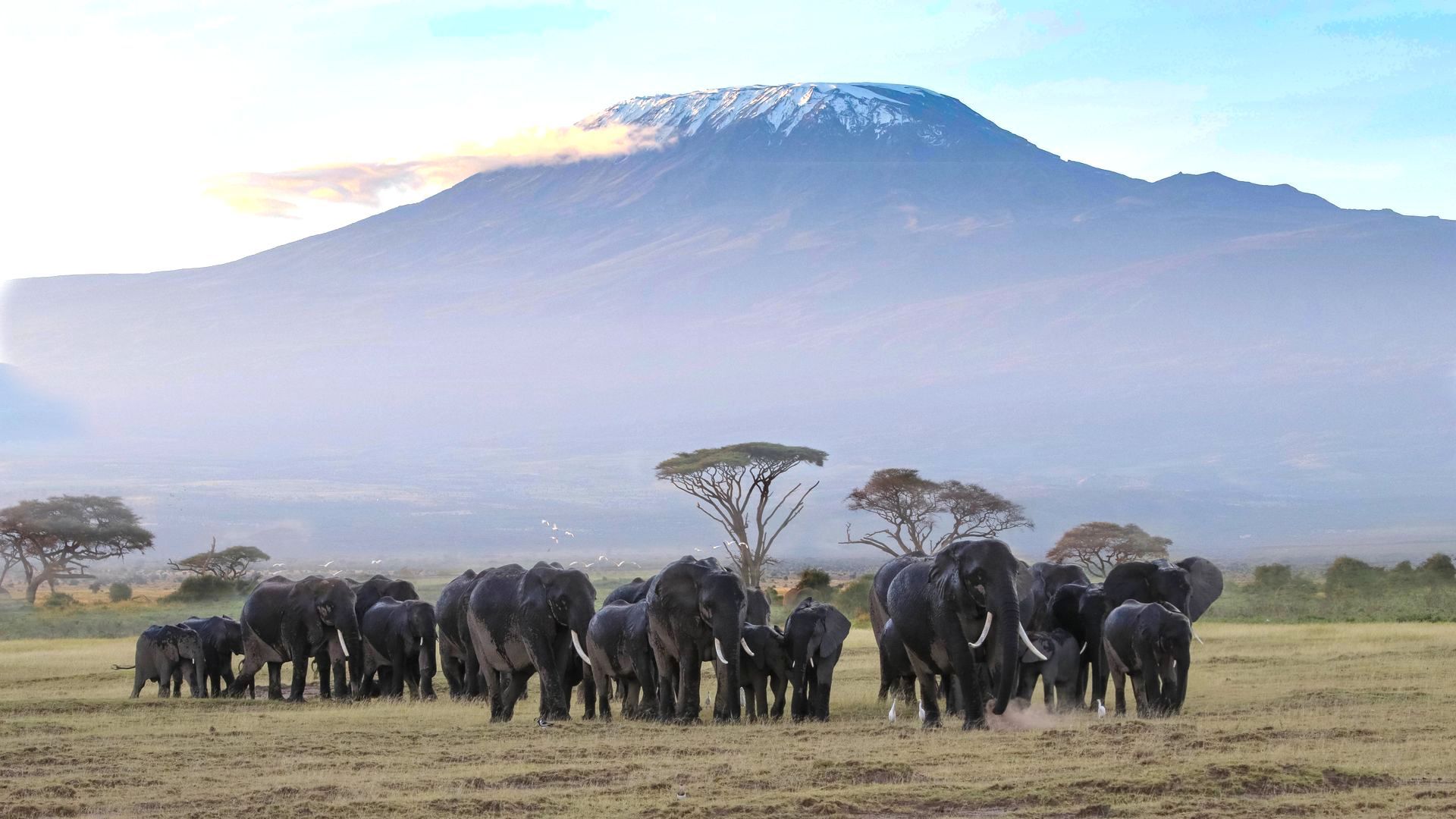
Slide title
Write your caption hereButton
The place
WHERE SAFARI BEGAN
It's a word that virtually single-handedly put Africa on the world's travel map... "Safari" - a Swahili word meaning "journey" that comes from the country that's regarded as the traditional home of African adventure - Kenya.
Indeed, when you first think of a safari, images of Kenya usually spring to mind - herds of thousands of wildebeest filling endless grassy plains, the movie "Out of Africa" and the golden era of African exploration and unrivalled wildlife experiences in impossibly beautiful landscapes.
Today, Kenya has so much to offer the safari enthusiast, from its beautiful eastern coastline inland through some of the most iconic game reserves in Africa - Samburu, Amboseli, the Masai Mara, and the breathtaking far north where the Laikipia Plateau meets the Great Rift Valley...
Renowned for its great plains - home of the phenomenon that is the Great Wildebeest Migration - and its great lakes dotted with flamingoes, Kenya is also home to perhaps the most perfect view of Africa's highest mountain - Kilimanjaro - where its snowy peak towers over the grassy plains of Amboseli filled with elephants and a host of other iconic wildlife species.
The people of Kenya are equally fascinating, with ancient tribal customs and proud cultural traditions that only add to this country's huge appeal.

Slide title
Write your caption hereButton
Slide title
Write your caption hereButton
Slide title
Write your caption hereButton
The place
WHERE SAFARI BEGAN
It's a word that virtually single-handedly put Africa on the world's travel map... "Safari" - a Swahili word meaning "journey" that comes from the country that's regarded as the traditional home of African adventure - Kenya.
Indeed, when you first think of a safari, images of Kenya usually spring to mind - herds of thousands of wildebeest filling endless grassy plains, the movie "Out of Africa" and the golden era of African exploration and unrivalled wildlife experiences in impossibly beautiful landscapes.
Today, Kenya has so much to offer the safari enthusiast, from its beautiful eastern coastline inland through some of the most iconic game reserves in Africa - Samburu, Amboseli, the Masai Mara, and the breathtaking far north where the Laikipia Plateau meets the Great Rift Valley...
Renowned for its great plains - home of the phenomenon that is the Great Wildebeest Migration - and its great lakes dotted with flamingoes, Kenya is also home to perhaps the most perfect view of Africa's highest mountain - Kilimanjaro - where its snowy peak towers over the grassy plains of Amboseli filled with elephants and a host of other iconic wildlife species.
The people of Kenya are equally fascinating, with ancient tribal customs and proud cultural traditions that only add to this country's huge appeal.
KENYA'S HOTSPOTS
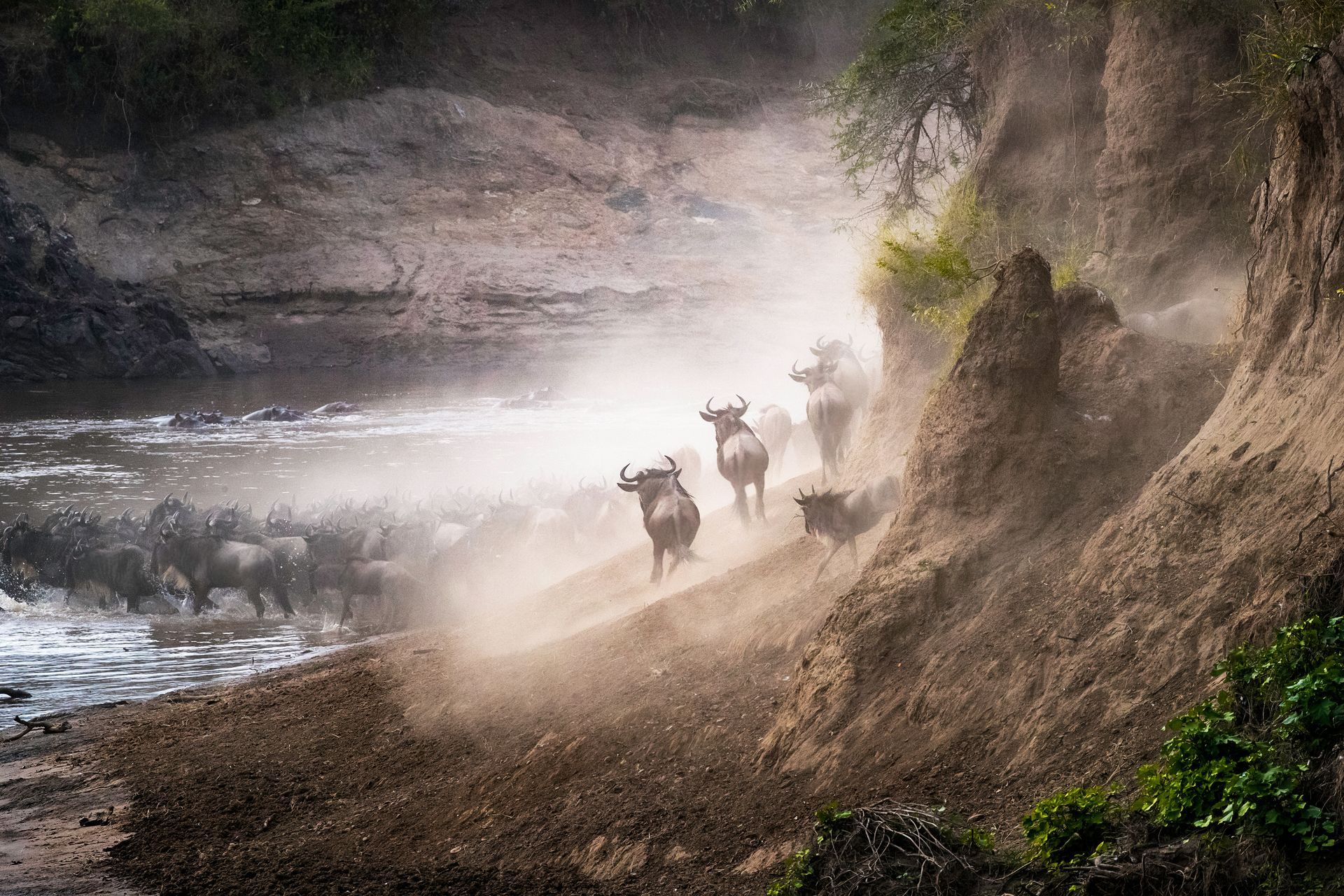
The Masai Mara
Covering 580 square miles of pristine savannah grasslands, the Masai Mara has become synonymous with superlative wildlife and the legendary annual migration of hundreds of thousands of wildebeest and zebra that, along with the neighbouring Serengeti in Tanzania, makes up one of the most incredible mass movements of animals on the planet.
The migration in the Mara takes place from July to October each year. This is when the wildebeest and zebra move up from the Serengeti in search of fresh grazing, crossing the Mara River on their way. It's dubbed the "greatest show on earth" for a reason! Indeed, the Masai Mara enjoys excellent year-round game viewing. It's home to more than 90 mammal and 450 bird species and its vast open spaces and gentle, rolling hills provide an epic safari backcloth.
This is where you will find some of the highest concentrations of predators in Africa, including lion, leopard, cheetah and hyena. The crocodiles of the Mara River are also famed across the world as being some of the largest in Africa, thanks to their feasting on wildebeest and zebra during the annual migration, which sustains them for most of the year.
The Masai Mara belongs to the local Masai people of Narok County. Perhaps the most iconic of Africa's tribes, the Masai are nomadic pastoralists and cattle herders whose origins can be traced back to the Nile valley. With some of the most beautiful and authentic safari camps and lodges in Africa located in the Masai Mara, it's an absolute must for any East African safari itinerary.
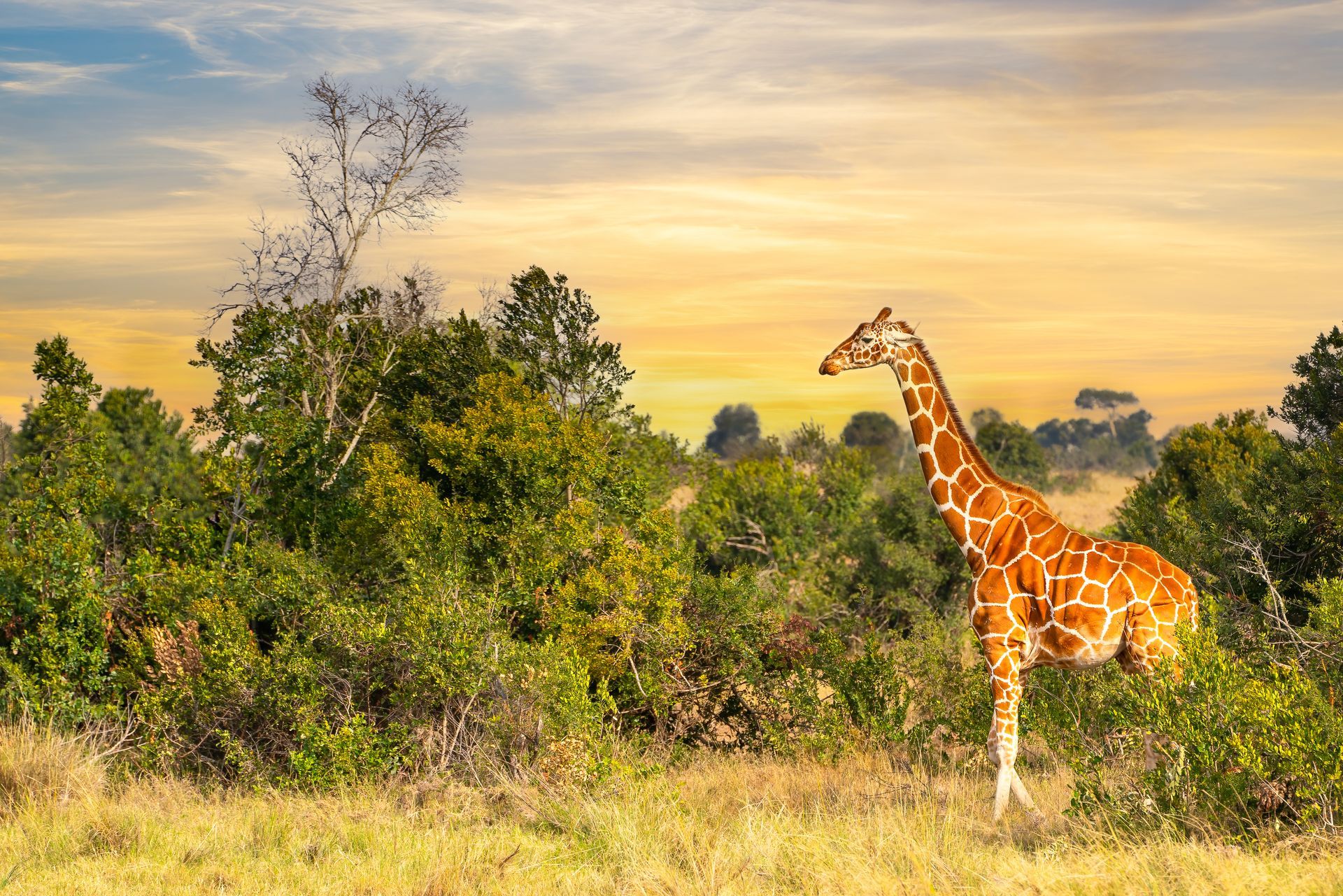
Samburu National Reserve
Tucked away in the Rift Valley region of Kenya north of Laikipia, Samburu is a small and intimate wildlife reserve that offers a wonderfully authentic safari experience.
The traditional homeland of the Samburu people, it's largely a semi-arid eco-system dotted with beautiful palm groves and riverine forests and northern Kenya's biggest river - the Ewaso Nyiro.
It's this river that first brought the Samburu - nomadic pastoralists and cattle herders - to the region as it provides water for their herds, as well as quenching the thirst of the indigenous wildlife. This is where you will find rare species such as Grevy's zebra, the Somali ostrich, reticulated giraffe, gerenuk and Beisa oryx - known collectively as the "Samburu Special Five"!
The Samburu National Reserve has a craggy, rugged beauty all of its own that offers a truly special safari experience. Rich in iconic species like elephant and major predators like lion, leopard and cheetah, you also find the endangered painted wolf (African wild dog) here.
The Samburu people still live in traditional manyattas (villages) that can be moved to follow fresh grazing for their donkeys, goats and cattle. Camels have become part of their heritage, having been introduced by Arab traders hundreds of years ago. They have thrived in this dry environment and today you can undertake a safari atop a camel, exploring the wilderness on the ship of the desert!
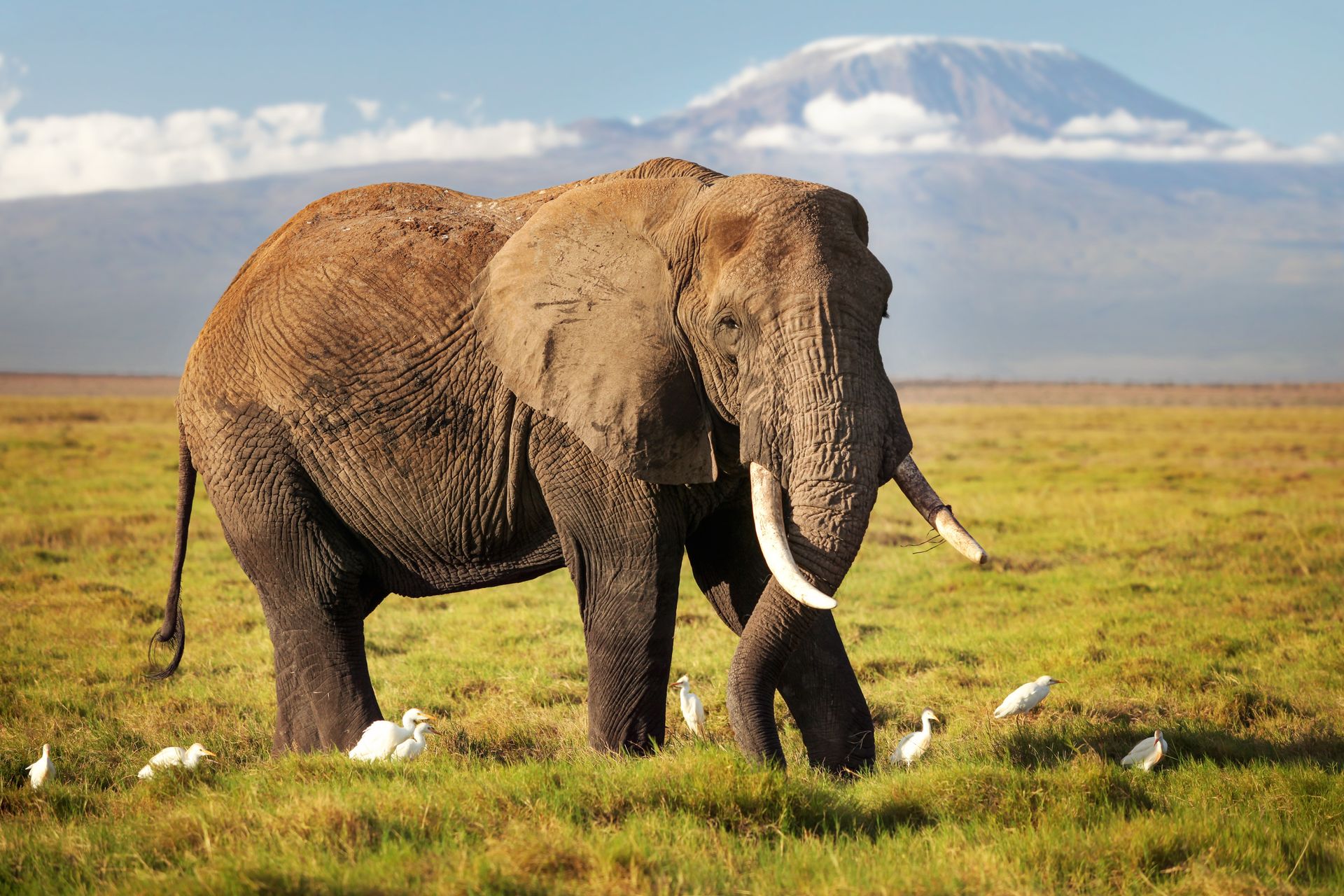
Amboseli National Park
Renowned for its legendary "tuskers", huge elephant herds and the magnificent backdrop of Mount Kilimanjaro - Africa's highest peak that's located just across the border in neighbouring Tanzania - Amboseli National Park is absolutely breathtaking.
The second most popular national park in Kenya, after the Masai Mara, it's also home to one of Kenya's most celebrated wetlands, thanks to its endless supply of subterranean water that comes from Kilimanjarors melted snow, filtered through the ancient volcanic rock forming springs in the park's centre.
The various lakes, swamps and marshes in this central area are important sources of water for the wildlife and this is where you'll find hippos and a rich variety of waterbirds as well as high concentrations of game and elephants.
At just over 151 square miles in size, Amboseli sits at the heart of a 3,100 square mile ecosystem. Pivotal to this region is its critically important elephant corridor that sees the free movement of some of the largest elephant bulls left in Africa from Tsavo in the east, through the Chyulu Hills to Amboseli and across the border into Tanzania.
You'll also find a rich variety of plains game at Amboseli, including giraffe, zebra, buffalo and antelope species as well as predators like lion, cheetah and leopard.
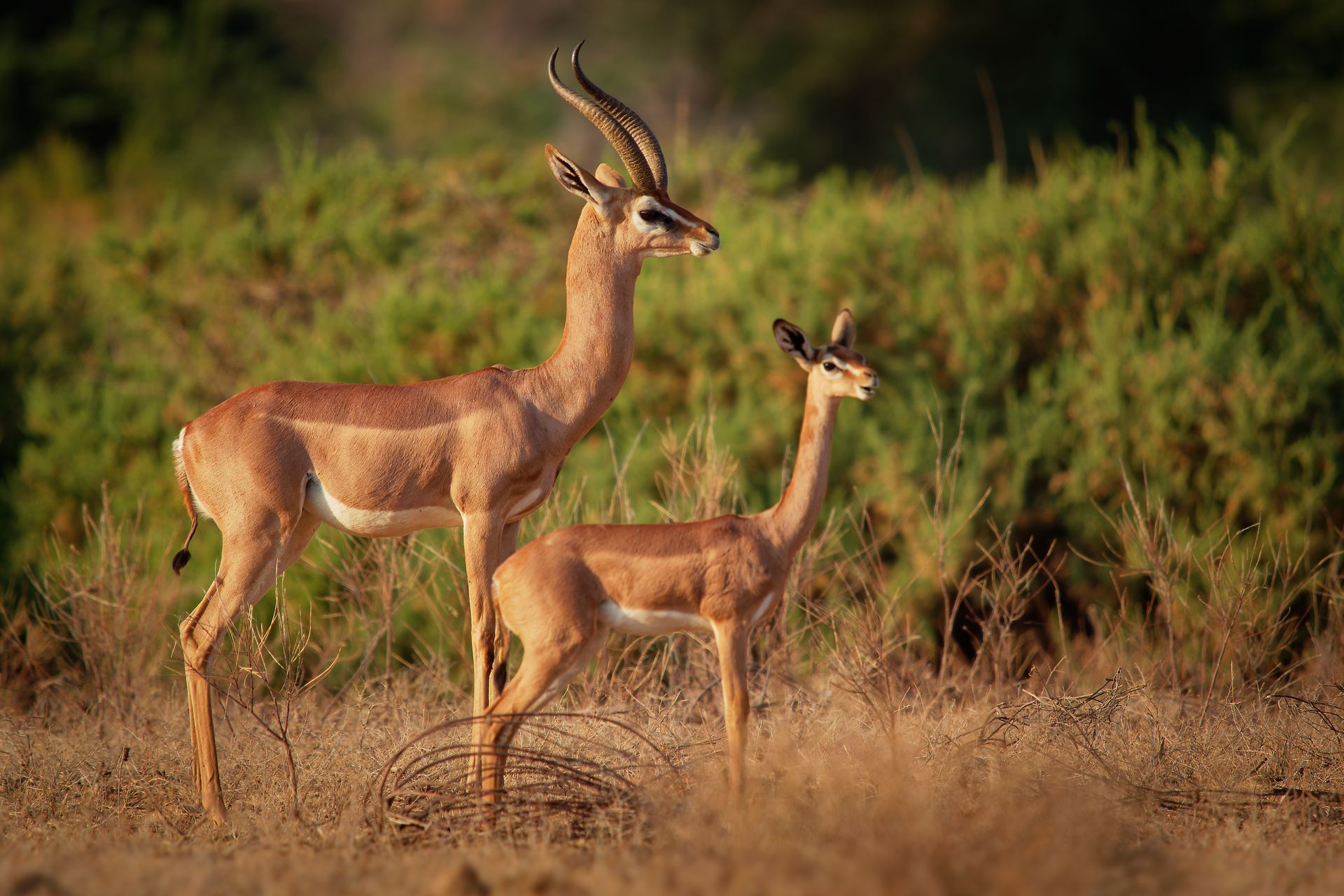
Laikipia region
Laikipia is frontier country. Stretching from the slopes of Mount Kenya to the edge of the Great Rift Valley, the Laikipia Plateau is a breathtaking natural wilderness created by conservationists and the local Kikuyu and Samburu people, who have given up a vast swathe of their land to maintain and protect biodiversity.
Dominated by the dramatic, craggy peaks of Mount Kenya, the plains of Laikipia are home to a variety of wildlife species from Grevy's zebra, reticulated giraffe and painted wolves (African wild dogs) to black rhino and even rare, melanistic leopards! The eco-systems are as diverse as the landscapes, ranging from pristine montane forest to fertile grasslands, with natural springs and acacia woodland dominated by towering fever trees.
The views across the Great Rift Valley are phenomenal, with the Matthews mountain range towering dramatically in the distance. This is where you'll find lush, tropical forests and winding trails made by elephants begging to be explored.
The Laikipia Plateau is also home to substantial numbers of lion and cheetah, gerenuk and Beisa oryx. The land here is made up of collection of jointly managed ranches and conservancies offering wonderful safari experiences similar to the private game reserves of Southern Africa, with some exceptional lodges and superlative guides.
KENYA'S HOTSPOTS
The Masai Mara
Covering 580 square miles of pristine savannah grasslands, the Masai Mara has become synonymous with superlative wildlife and the legendary annual migration of hundreds of thousands of wildebeest and zebra that, along with the neighbouring Serengeti in Tanzania, makes up one of the most incredible mass movements of animals on the planet.
The migration in the Mara takes place from July to October each year. This is when the wildebeest and zebra move up from the Serengeti in search of fresh grazing, crossing the Mara River on their way. It's dubbed the "greatest show on earth" for a reason! Indeed, the Masai Mara enjoys excellent year-round game viewing. It's home to more than 90 mammal and 450 bird species and its vast open spaces and gentle, rolling hills provide an epic safari backcloth.
This is where you will find some of the highest concentrations of predators in Africa, including lion, leopard, cheetah and hyena. The crocodiles of the Mara River are also famed across the world as being some of the largest in Africa, thanks to their feasting on wildebeest and zebra during the annual migration, which sustains them for most of the year.
The Masai Mara belongs to the local Masai people of Narok County. Perhaps the most iconic of Africa's tribes, the Masai are nomadic pastoralists and cattle herders whose origins can be traced back to the Nile valley. With some of the most beautiful and authentic safari camps and lodges in Africa located in the Masai Mara, it's an absolute must for any East African safari itinerary.
Samburu National Reserve
Tucked away in the Rift Valley region of Kenya north of Laikipia, Samburu is a small and intimate wildlife reserve that offers a wonderfully authentic safari experience.
The traditional homeland of the Samburu people, it's largely a semi-arid eco-system dotted with beautiful palm groves and riverine forests and northern Kenya's biggest river - the Ewaso Nyiro.
It's this river that first brought the Samburu - nomadic pastoralists and cattle herders - to the region as it provides water for their herds, as well as quenching the thirst of the indigenous wildlife. This is where you will find rare species such as Grevy's zebra, the Somali ostrich, reticulated giraffe, gerenuk and Beisa oryx - known collectively as the "Samburu Special Five"!
The Samburu National Reserve has a craggy, rugged beauty all of its own that offers a truly special safari experience. Rich in iconic species like elephant and major predators like lion, leopard and cheetah, you also find the endangered painted wolf (African wild dog) here.
The Samburu people still live in traditional manyattas (villages) that can be moved to follow fresh grazing for their donkeys, goats and cattle. Camels have become part of their heritage, having been introduced by Arab traders hundreds of years ago. They have thrived in this dry environment and today you can undertake a safari atop a camel, exploring the wilderness on the ship of the desert!
Amboseli National Park
Renowned for its legendary "tuskers", huge elephant herds and the magnificent backdrop of Mount Kilimanjaro - Africa's highest peak that's located just across the border in neighbouring Tanzania - Amboseli National Park is absolutely breathtaking.
The second most popular national park in Kenya, after the Masai Mara, it's also home to one of Kenya's most celebrated wetlands, thanks to its endless supply of subterranean water that comes from Kilimanjarors melted snow, filtered through the ancient volcanic rock forming springs in the park's centre.
The various lakes, swamps and marshes in this central area are important sources of water for the wildlife and this is where you'll find hippos and a rich variety of waterbirds as well as high concentrations of game and elephants.
At just over 151 square miles in size, Amboseli sits at the heart of a 3,100 square mile ecosystem. Pivotal to this region is its critically important elephant corridor that sees the free movement of some of the largest elephant bulls left in Africa from Tsavo in the east, through the Chyulu Hills to Amboseli and across the border into Tanzania.
You'll also find a rich variety of plains game at Amboseli, including giraffe, zebra, buffalo and antelope species as well as predators like lion, cheetah and leopard.
Laikipia region
Laikipia is frontier country. Stretching from the slopes of Mount Kenya to the edge of the Great Rift Valley, the Laikipia Plateau is a breathtaking natural wilderness created by conservationists and the local Kikuyu and Samburu people, who have given up a vast swathe of their land to maintain and protect biodiversity.
Dominated by the dramatic, craggy peaks of Mount Kenya, the plains of Laikipia are home to a variety of wildlife species from Grevy's zebra, reticulated giraffe and painted wolves (African wild dogs) to black rhino and even rare, melanistic leopards! The eco-systems are as diverse as the landscapes, ranging from pristine montane forest to fertile grasslands, with natural springs and acacia woodland dominated by towering fever trees.
The views across the Great Rift Valley are phenomenal, with the Matthews mountain range towering dramatically in the distance. This is where you'll find lush, tropical forests and winding trails made by elephants begging to be explored.
The Laikipia Plateau is also home to substantial numbers of lion and cheetah, gerenuk and Beisa oryx. The land here is made up of collection of jointly managed ranches and conservancies offering wonderful safari experiences similar to the private game reserves of Southern Africa, with some exceptional lodges and superlative guides.
SAFARIS IN KENYA
Explore Kenya with us on the safari of a lifetime and discover why this wonderful East African country is one of the world's most sought-after travel destinations.
Take in the vast landscapes of the Masai Mara, the jaw-dropping beauty of Amboseli and follow in the footsteps of the legendary explorers in the northern frontier region.
To find out more about our safari packages to Kenya or to create your own, bespoke itinerary taking in the highlights of this beautiful country, click on the button below...
SAFARIS IN KENYA
Explore Kenya with us on the safari of a lifetime and discover why this wonderful East African country is one of the world's most sought-after travel destinations.
Take in the vast landscapes of the Masai Mara, the jaw-dropping beauty of Amboseli and follow in the footsteps of the legendary explorers in the northern frontier region.
To find out more about our safari packages to Kenya or to create your own, bespoke itinerary taking in the highlights of this beautiful country, click on the button below...

